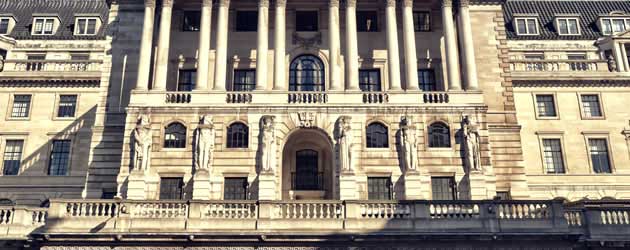Pound Sterling Australian Dollar (GBP/AUD) Exchange Rate Slides as BoE Increases Bond-Buying Programme
UPDATE: The Pound Sterling Australian Dollar (GBP/AUD) exchange rate plummeted by -0.7% Thursday afternoon. This left the pairing trading at around AU$1.8118.
Sterling slumped this afternoon after the Bank of England (BoE) increased its bond-buying power by £100 billion to help buoy the coronavirus-hit economy.
The BoE also left interest rates at 0.1% and said it expects the new total of £745 billion in government bond purchases to be hit by the end of 2020.
Commenting on the bank’s decision, Viraj Patel, FX and global macro strategist at Arkera noted:
‘It was on the hawkish end of the spectrum for what the BoE could have done today. The pace at which the BoE’s asset purchases will take place over the coming months will materially slow – meaning that there will be less marginal QE support.
‘That explains the headline-driven increase in the pound – although overall, given that the Bank can scale-up purchases as and when they like, it’s not something to get carried away with.’
Pound Sterling Australian Dollar (GBP/AUD) Exchange Rate Muted as Investors Eye the BoE
The Pound Sterling Australian Dollar (GBP/AUD) exchange rate remained flat on Thursday morning. This left the pairing trading at around AU$1.8229.
The Pound remained under pressure today as traders eagerly await the Bank of England’s (BoE) latest monetary policy meeting.
The bank is widely expected to announce a further £100 billion increase in its bond-buying programme.
Although, there is some speculation the BoE will offer a larger increase as the bank has already spent most of the £200 billion of firepower it gave itself in March.
Bond-buying seems to be the bank’s most powerful option to help it steer the economy away from the record 25% slump in March and April. It is also trying to push inflation back towards it’s 2% target after yesterday’s data revealed May’s rate slumped to 0.5%
With interest rates at 0.1%, Governor Andrew Bailey noted the bank will consider doing below zero for the first time. However, this review will take time.
Many expect the Monetary Policy Committee to reaffirm its message that it is ready to offer further support if needed.
Commenting ahead of today’s BoE meeting, Swissquote Bank’s senior analyst, Ipek Ozkardeskaya noted:
‘With plummeting inflation, rising unemployment and lingering risks of a no-deal Brexit, the bank has room and solid reasons to move towards a more unorthodox policy. While the BoE’s near zero rates and massive asset purchases should push the consumer prices higher in the long run, inflation will probably not be a cause for concern in the foreseeable future.
‘Given the expectation of quantitative easing expansion is fully priced in, the BoE announcement per se may not move the market significantly unless we see a meaningfully different outcome from the BoE meeting or a hint for more policy easing in the foreseeable future.’
Australian Dollar (AUD) Rises despite 19-Year High Aussie Unemployment Rate
The Australian Dollar remained under pressure today after the country’s unemployment rate jumped to 7.1% in May.
This weighed on the ‘Aussie’ as this was the highest the unemployment rate has been since October 2001.
Australia lost another 227,700 jobs last month after a dire 600,000 losses in the previous month due to the coronavirus crisis.
The country’s unemployment rate seems to be showing no signs of slowing down, with the latest data worse than expected. This morning’s data release revealed that nearly 90,000 of the jobs lost were full-time.
The ‘Aussie’ remained under pressure as despite a significant re-opening in June and July, the Treasury forecasts unemployment will end up at around 8%.
This would leave hundreds of thousands more out of work, with little prospects of returning. Many Australians have already left the labour force, as the country’s participation rate continues to slide.
Added to this, with the number of Australians out of work the unemployment rate should be higher. IFM Investors’ chief economist stated that if all those out of work were looking for a job this figure would be much higher.
He wrote in a Tweet:
‘If the [participation rate] had stayed at January’s high of 66.1% the unemployment rate would sit at 11.6% – arguably a truer reflection of the labour market dislocation currently occurring.’
Pound Australian Dollar Outlook: Bank of England in Focus
Looking ahead, the Pound (GBP) could slide against the Australian Dollar (AUD) as all eyes focus on the Bank of England’s (BoE) monetary policy meeting later today.
If the BoE is overly dovish about the outlook for the British economy and focus on recent weak data, Sterling will fall.
GBP could suffer further losses on Friday following the release of May’s retail sales data. This will give investors clues on whether or not the retail sector is recovering from the coronavirus crisis.
If retail sales shows British shoppers are increasingly pessimistic due to the coronavirus pandemic, it will send the Pound Australian Dollar (GBP/AUD) exchange rate lower.


Comments are closed.